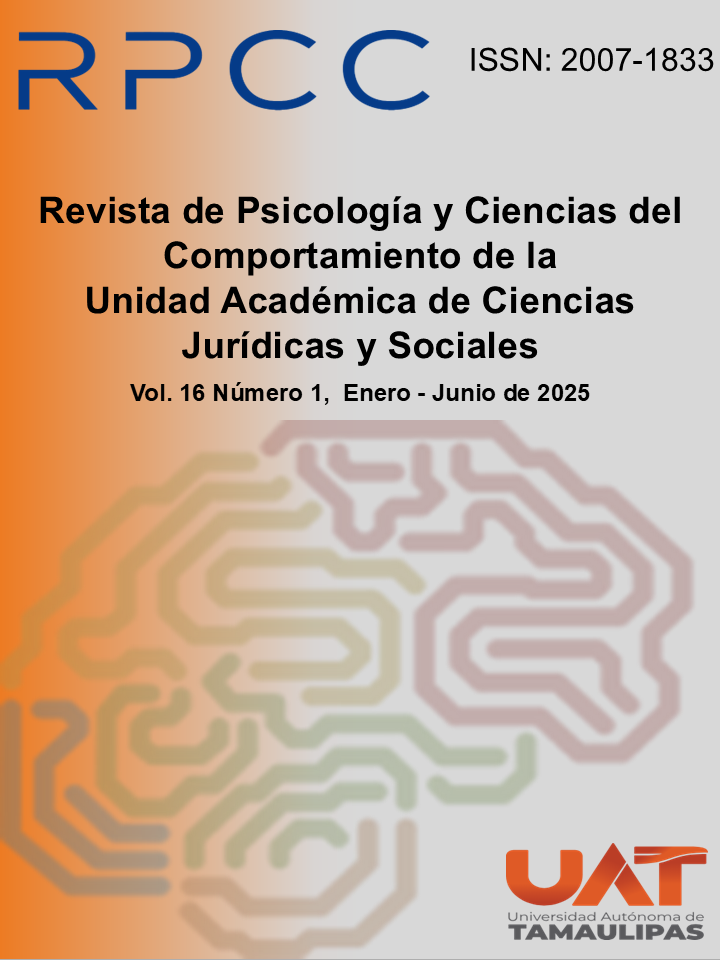Utopias and dystopia, fears and hopes among university youth
DOI:
https://doi.org/10.29059/rpcc.20250601-193Keywords:
projects, feelings, representations, utopia, dystopiaAbstract
Based on the social concepts and projects of utopia and dystopia, and the social emotions that arouse, the vision and reflection of the idea and thinking of the future, and the feelings that accompany it, in a group of students are inquir. Which is done through the focus of social representations and with the information obtained in the application of focus groups between university students that illuminated projects and affections, as well as their intertwining. In general, utopia is considered more beneficial, but more possible to dystopia, there is fear in the future, but there is also hope.
References
Abellán, J. L. (1971). Mito y cultura. Madrid: Seminarios y ediciones.
Abric, J. C. (2004). “Las representaciones sociales: aspectos teóricos” en Abric, J.-C. DOI: https://doi.org/10.3917/puf.jodel.2003.01.0203
(Dir.) Prácticas sociales y representaciones. México: Coyoacán.
Araya, S. (2002). Las representaciones sociales: ejes teóricos para su discusión. San José:
FLACSO.
Baczko, B. (1999). Los imaginarios sociales. Nueva Visión: Buenos Aires.
Banchs, M. A.; Agudo Guevara, Á. y Astorga, L. (2007). “Imaginarios, representaciones y
memoria social” en Arruba, Á. y De Alba, M. (Coords.) Espacios imaginarios y representaciones sociales. Aportes desde Latinoamérica. Barcelona: Anthropos/UAM-I.
Bauman, Z. (2007). Miedo líquido. La sociedad contemporánea y sus temores. Barcelona:
Paidós.
Bloch, E. (2007). El principio de la esperanza. Madrid: Trotta.
Bruner, J. (2002). La fábrica de historias. Buenos Aires: FCE.
Bruner, J. (2012). Realidad mental y mundos posibles. Barcelona: Gedisa
Carrillo, E.; Delgado, J.; López, M.; González Martín; Quiroga, S. y V. Marcos (2021).
Consciencia y sociedad distópica. Madrid: Adaliz.
Creswell, J. (2005). Educational research: Planning, conducting ans evaluating quantitative
and qualitative research. Upper Saddle River: Pearson,
De Sousa Santos, B. (2016). La difícil democracia. Una mirada desde la periferia europea.
Madrid: Akal.
De Sousa Santos, B. (2020). La cruel pedagogía del virus. Buenos Aires: CLACSO. DOI: https://doi.org/10.2307/j.ctv1gm01nn
Durand, G. (2000). Lo imaginario. Barcelona: Ediciones del Bronce.
Durand, G. (2012). Las estructuras antropológicas del imaginario. México: FCE.
Erreguerena, J.(2011). Resistencia al porvenir. Las distopías en el cine hollywoodense.
México: UAM.
Fernández, A. M. (2009). La investigación social. México: UAM/Trillas.
Fromm, E. (1984). La revolución de la esperanza. México: FCE.
Fromm, E. (2006). Anotomía de la destructividad humana. México: SXXI.
Girola, L. (2012). “Representaciones e imaginarios sociales. Tendencias recientes en la
investigación” en de la Garza Toledo, E, y Leyva, G. (Eds.) Tratado de metodología de las ciencias sociales: perspectivas actuales. D.F.: FCE/UAM.
Jodelet, D. (2008). “La representación social: fenómenos, concepto y teoría” en Moscovici,
S, Psicología social II. D.F.: Paidós.
Kierkegaard, S. (2007). El concepto de angustia. Madrid: Alianza Editorial.
Krotz, E. (1988). Utopía. México:UAM.
Lain Entralgo, P. (1975). La espera y la esperanza. Madrid: Revista de Occidente.
Marina, J. A. (2007). Anatomía del miedo. Un tratado sobre la valentía. Barcelona:
Anagrama.
Marina, J. A. y López, M. (2007). Diccionario de los sentimientos. Barcelona: Anagrama.
Moro, T. (2009). Utopía. Madrid: Diario Público.
Moscovici, S. (1979). El psicoanálisis, su imagen y su público. Buenos Aires: Huemul.
Ricoeru, P. (2008). Ideología y utopía. Barcelona: Gedisa.
Robin, C. (2009). El miedo. Historia de una idea política. FCE: México.
Rodríguez, T. (2007). “Sobre el estudio cualitativo de la estructura de las representaciones
sociales” en Rodríguez, T. y García, M. L. (Coords,). Representaciones sociales. Teoría e investigación. Guadalajara: Universidad de Guadalajara.
Rodríguez, T. y Pérez, M. (2007). “Representaciones sociales del amor en jóvenes urbanos”
en Luna, R. y Scribano, A. (Coords.) Contigo aprendí. Estudios sobre las emociones. Córdoba: Universidad Nacional de Córdoba.
Spinoza, B. (1977). Ética demostrada según el orden geométrico. México: FCE.
Stake, R. (1994). Case Studies, En Norman K. Denzwhytein y Yvonna Lincoln (Edits.)
Handbook of Qualitative Research, Sage Publications, 236-245.
Yin, R. (1994). Case Study Research. Design and Methods. New York: Sage Publication.
Downloads
Published
Issue
Section
License

This work is licensed under a Creative Commons Attribution-NonCommercial-ShareAlike 4.0 International License.
Those authors who have publications with the Journal of Psychology and Behavioral Sciences of the Academic Unit of Legal and Social Sciences, accept the following terms:
a. The authors will retain their copyright and guarantee the journal the right to first publish their work, which will be simultaneously subject to the Creative Commons Attribution-NonCommercial-Share Alike 4.0 International License. which allows third parties to share the work as long as its author and his first publication are indicated this journal.
b. Authors may adopt other non-exclusive license agreements for the distribution of the version of the published work (e.g., deposit it in an institutional telematic archive or publish it in a monographic volume) provided that the initial publication in this journal is indicated.
C. Authors are allowed and recommended to disseminate their work through personal communication (e.g. colleagues) before and during the submission process, for purposes of feedback or enrichment of the work, which can produce interesting exchanges








